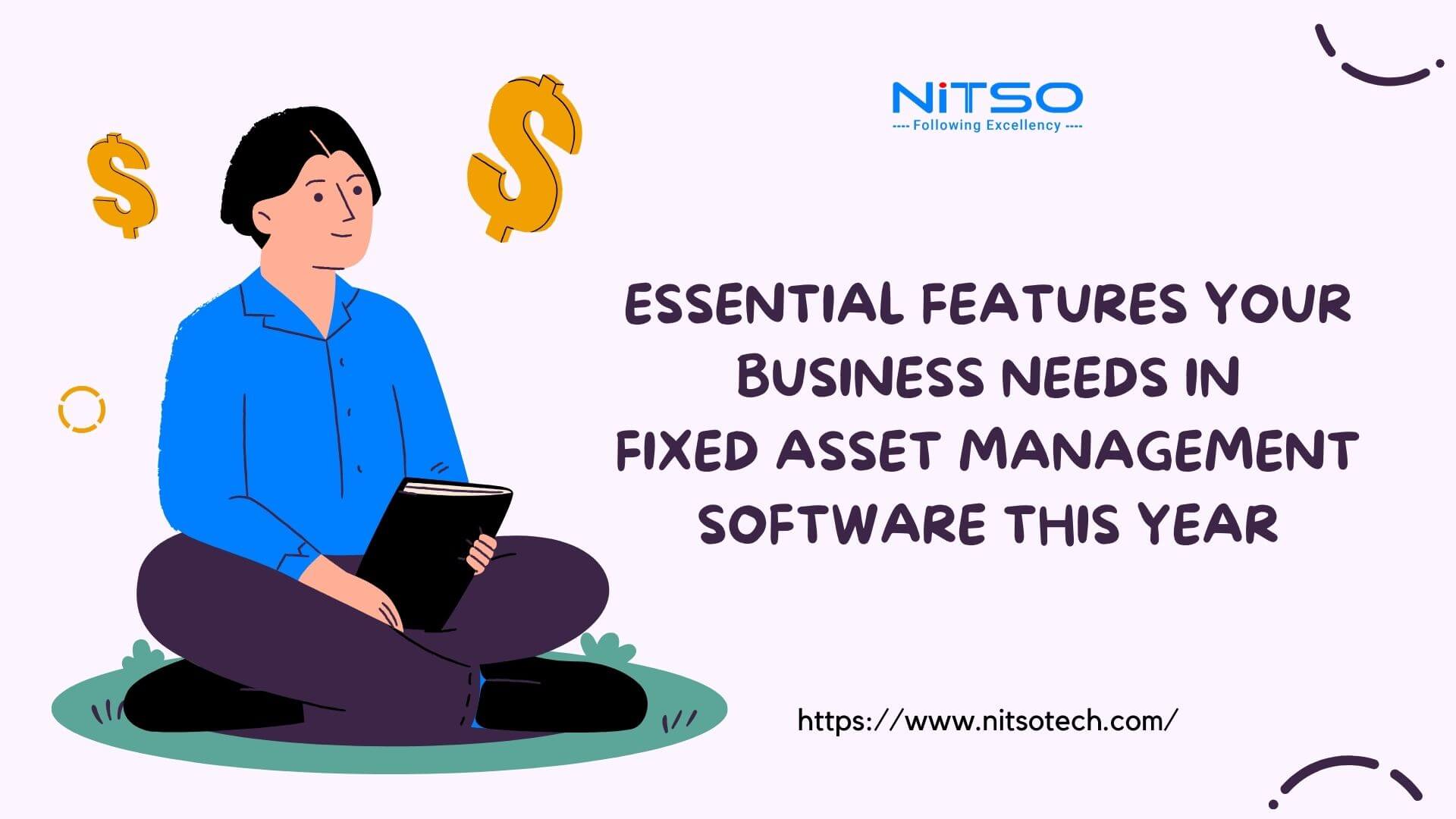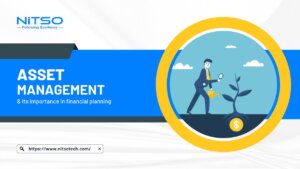As companies scale, asset management grows exponentially more complex across sites, departments and regions. Manual tracking via error-prone spreadsheets or outdated software no longer sustains efficiency nor analytics needed for strategic planning. Evaluating modern fixed asset management systems in 2024 requires focusing beyond basic inventory tracking.
Advanced SaaS platforms now unlock far greater ROI through configurable dashboards, custom reporting, enhanced mobility and tighter integrations. Resetting expectations around these operational software promises better outcomes when replacing antiquated tools.
This article covers the most vital capabilities to expect from leading solutions on the market this year when prioritizing more accurate asset oversight.
Top Capabilities to Expect from Your Next Fixed Asset Tracking System
1. Cloud-based system
For companies dealing with a large volume of valuable business assets – from technology equipment to machinery to fleet vehicles and more – tracking all those assets efficiently is crucial but can be a major challenge with manual methods or legacy systems. As we move into 2024, a cloud-based fixed asset management software solution brings key innovations for both IT teams and finance departments overseeing these complex tasks.
So what specifically does “cloud-based” provide? At a basic level, it means the software and all data on your fixed assets are hosted remotely on private or public cloud servers that you access via the internet. This delivers a suite of advantages:
- Accessibility from anywhere, on any device: Cloud platforms allow secure access on the go from your phone, office computer, or remote laptops for management and monitoring. Vital when assets and people are moving fast across sites.
- Quick scalability to handle growth: Adding more assets, users, sites or integrations flexes instantly without reliance on your own servers. The cloud scales easily as needed to match business fluctuations.
- Automatic software updates roll out seamlessly: No more waiting weeks for scheduled on-premise IT upgrades that slow people down. Cloud systems progress continuously so you’re always working with the latest optimizations.
The bottom line? Cloud fixed asset software gives back time for the strategic work needed to maximize ROI on assets while minimizing the tactical headache of tracking them. Evaluating where legacy systems or previous methods slow your team down is the first step to leveraging next-gen solutions. Knowing the core benefits drives better decision-making in finding the right platform for your assets in 2024 and beyond.
2. Customizable reporting and dashboard
Once an advanced cloud-based system is implemented for consolidated fixed asset tracking and management, specialized reporting and analytics capabilities unlock a wealth of refined business insights on this critical data. Legacy methods prone to spreadsheets and manual processes often struggle to extract meaningful analysis – a problem modern solutions now solve.
Configurable reporting templates and dashboards should provide:
- Custom reports on any subset of assets filtered by locations, departments, asset types, age, value and other properties. These deep-dive reports deliver transparency into granular details like maintenance schedules, depreciating value by year, lease ending dates, net book values per segment and more based on your planning needs.
- One-glance dashboards with graphical visualizations of fixed asset KPIs for faster high-level snapshots. See status updates on inventory audits, depreciation projections, due dates and alerts in real time.
- Depreciation tracking across various calculation methods by asset. Line-by-line and summary analysis on current asset costs versus depreciated values.
The depth of analytics extends far beyond basic spreadsheets. Strategic executive planning requires the dynamic range only configurable reporting allows. Portfolio optimization, budgeting projections and performance monitoring all rely on customized analysis output that isolates focus areas.
Data-driven insights should be an expectation from fixed asset software as much as tracking capabilities. Evaluating the backend reporting engine and dashboard versatility offers crucial planning value hidden from plain sight. The foremost asset monitoring platforms shine brightest under the hood where intelligence strengthens over time.
3. Asset tracking and audit capabilities
Efficiently tracking fixed assets at scale while maintaining chain of custody records during movement presents tough obstacles without the right software tools. Barcode and RFID tags now streamline manual efforts to increase inventory visibility and accountability.
Modern fixed asset management software ingrate various options for simplified asset tagging like:
- Barcode labels contain unique asset identifiers that users can quickly scan during inventory audits using mobile devices or handheld barcode readers.
- QR code tags that link to asset records when scanned for easy in-transit documentation as items shift locations or change custodians.
- RFID tags with embedded radio antennas that trigger scanners automatically using proximity detection, removing human effort for validation while assets enter or exit sites.
These methods enable touchless, real-time asset tracking alongside chain of custody logs on when items got scanned, by whom, where and on what device. The software securely stores activity records to satisfy internal control requirements while unlocking massive time savings versus traditional pen and paper inventory efforts.
Ongoing cycle counts using such flexible audit capabilities provide perpetual visibility so discrepancies get addressed continuously – not just at year-end when data lag is severe. Instant anomaly alerts also bolster real-time reconciliation, minimizing misplacements.
Lastly, robust reporting generated across numerous metadata fields captured during scans allows custom tracking views by asset type, category, age, value and more. The specialized inventory management engine extends well beyond basic needs simply recording assets that exist somewhere internally. Sophisticated analytics, intelligent sensors and mobile adaptability bring fixed asset oversight to the modern age.
4. Data migration tools
Transitioning historical fixed asset records and data from an incumbent system or spreadsheet-based tracking introduces the risk of losing data integrity or accuracy without precautions. Savvy SaaS platforms provide tailored data migration tools to simplify this move.
Seeking software built with change in mind offers long-term flexibility. The best migration and validation with features like:
- Custom data upload templates to map your export schema, including validations during ingestion to prevent formatting issues. Data structure mismatches occur frequently scuttling transfers. Defining mappings through import wizards allows you to adapt to your specific needs rather than forcing changes on your existing data.
- Integration with legacy systems via APIs to sync selected data sets from old platforms directly into the new system. Typical integrations will extract essentials like asset descriptors, purchase dates, costs, depreciation details, last recorded locations, assignees, etc. Automating this connectivity prevents reliance on error-prone manual entry.
- Reference data validation checks before finalizing any migration to catch deviations between original source records and final structured output in the new system. Once migrated, all assets should retain the same identifiers, dates, histories and trail of previously logged changes – without gaps.
Mitigating data fallout during an asset management transition takes priority over all other features. Tracking continuity relies first on ensuring existing records shift reliably. While migrating and onboarding onto refined systems promises immense ROI through optimizing workflows, no net value gets realized if baseline data first corrupts.
Article you might be interested in: Best Practices for Depreciation of Fixed Assets
5. Cloud storage integrations
Managing volumes of asset paperwork, vendor invoices, maintenance records, insurance policies, titles, manuals and other associated documents creates tremendous administrative friction for decentralized teams when left unorganized. Integrating cloud storage directly into fixed asset systems centralizes this chaos.
Modern solutions embed connectivity to widely adopted platforms like Google Drive, Microsoft OneDrive and Dropbox through their open API libraries into the software architecture. Features like:
- Automatically initiating corresponding cloud folders for each new asset record for assigned stakeholders to directly upload/access all supporting files from their native cloud platforms without hassle.
- Allowing users to drag and drop any document directly into an asset’s profile from Windows File Explorer or Mac Finder to auto-sync with linked cloud volumes behind the scenes. No more emailing files around or hunting down the right folder on a shared drive.
- Scanning and attaching files directly from mobile devices out in the field where paperwork often gets stranded. Mobile optimization means asset managers never lack options to connect source records.
Document flows accelerate when tapping the ready availability of commercial Infrastructure-as-a-Service (IaaS) storage from leading technology giants. Their credibility and enterprise-grade reliability offer fixed-asset software extra flexibility without the burden of engineering proprietary storage systems.
While complex Asset Management platforms promise extreme configurability, the practical usability often pivots on simplicity around accessing asset libraries. Embedded cloud services bridge enormous benefits indirectly by connecting powerful tools teams want to use daily. Evaluating marketplace adoption rates of storage partnerships should weigh accordingly among IT decision-makers.
6. Access control permissions
Sophisticated roles-based access controls give managers better accountability, security and oversight on asset tracking activities. Assigning permissions strikes an essential balance between visibility needs and privacy regulations – a core pillar for governance.
Configurable user access levels allow administrative control over:
- Reading data like limiting hourly staff to just asset details required for their duties while finance derives global analysis across the enterprise portfolio. API keys also restrict third-party viewability.
- Entering or editing data such as allowing regional managers control of their geography’s assets while preventing unnecessary access elsewhere. Hierarchy design prevents accidental or intentional tampering.
- Deleting records which typically associated only with IT admin roles, if permitted at all, to prevent data loss. Some industries mandate asset record permanence like medical equipment tracking.
- Generating reports across a widening scope where executives see everything while other teams analyze selectively. Export limitations are common to enforce data integrity.
- Sharing access to external auditors, insurers or appraisers during policy renewals, inspections and mortality reviews without exposing business-sensitive information.
Well-coded permissions foster trust in the information security model while right-sizing involvement per each team member’s responsibilities. With data breaches routinely making headlines, these fundamentals take on greater priority when evaluating asset management requirements.
Privacy commitments stand only as strong as access controls enforce. SaaS platforms lacking depth or transparency around permission guardrails paint warning flags for impacts reaching far beyond just IT rules. Unifying powerful controls makes smooth adoptions.
Article you might be interested in: 10 Best Fixed Asset Accounting Software For Asset Tracking And Maximum Productivity
Conclusion
In closing, fixed asset management software continues maturing past basic inventory ledgers to deliver advanced analytics, mobile access and automation. Updated expectations better position teams to not just incrementally improve, but exponentially transform tracking experiences.
Prioritizing cloud platforms grants easier enterprise-wide accessibility, continuous software updates and flexible scalability to avoid another decade of stagnant legacy systems. Custom reports, role permissions and integrations are all relatively standardised in the top-tier options now available.
Matching specific business requirements to the multitude of specialized feature sets, however, remains imperative. One company’s indispensable tool still flops for others. Dedicating needs analysis and software evaluations pays dividends over guessing capabilities. Just don’t underestimate what asset management technology delivers in 2024 when assessing replacement options. The innovations stretch far and wide.







0 Comments